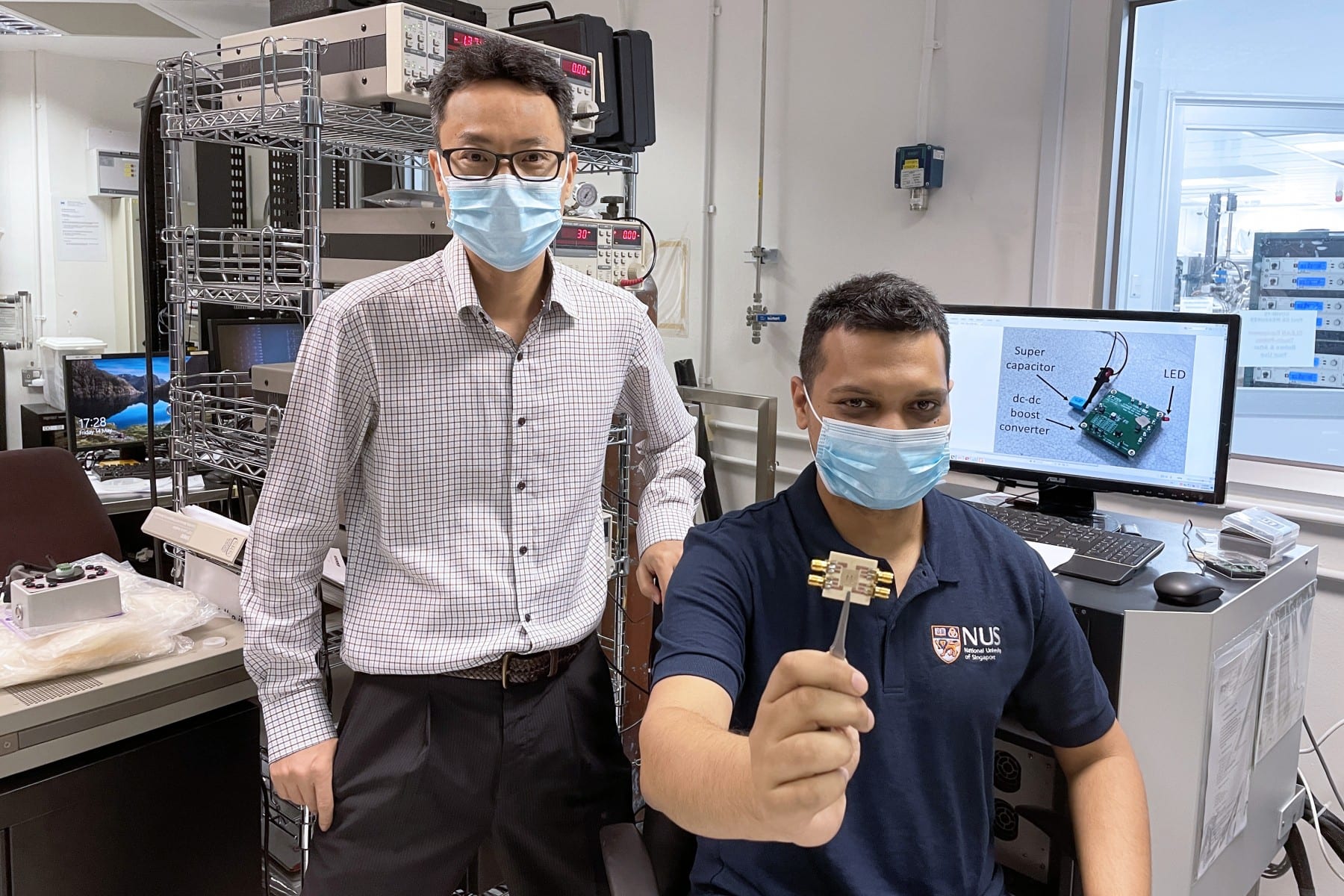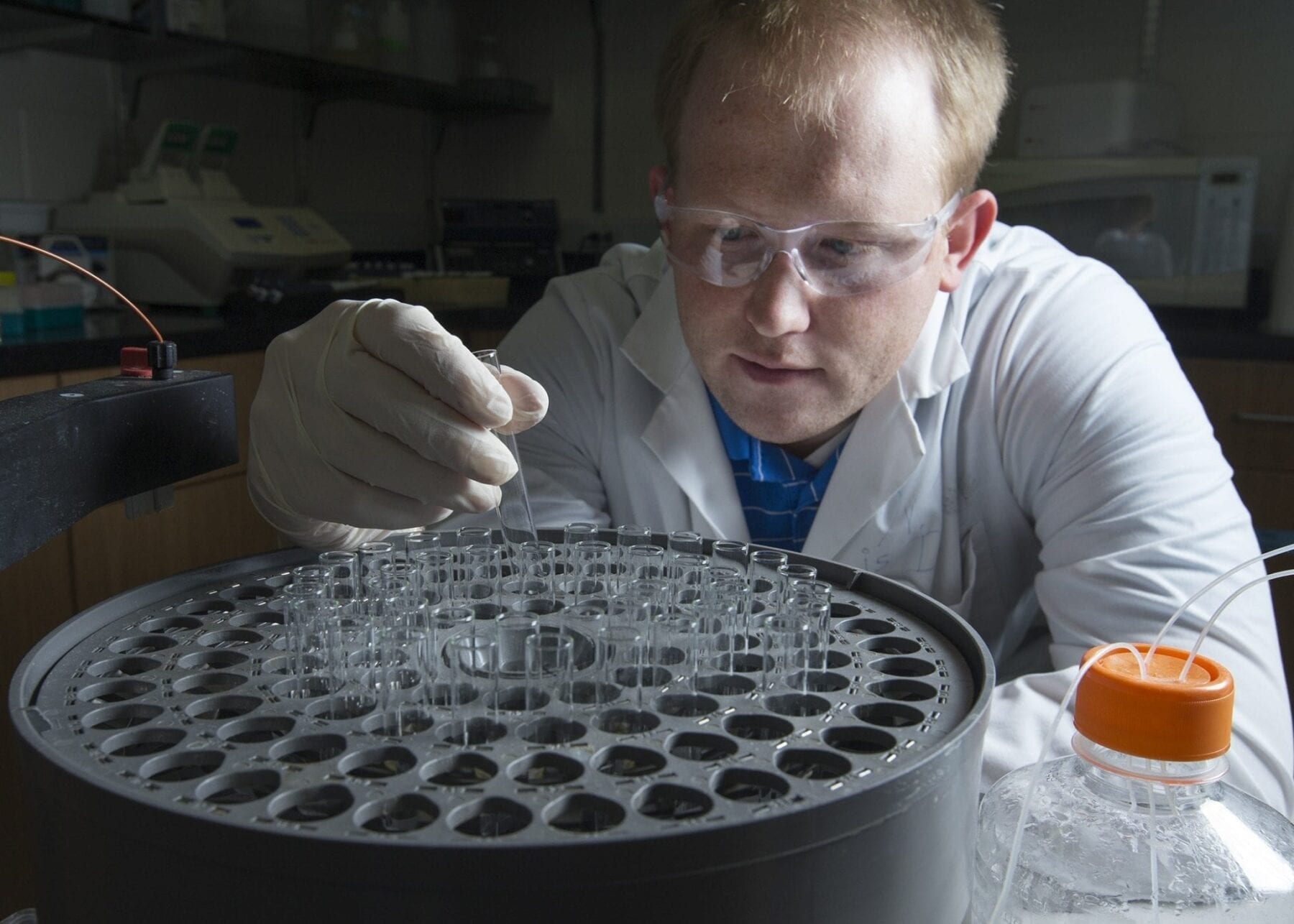
Professor Hank Pernicka and his team at Missouri S&T have developed a microsatellite imager in an Air Force contest and are working to produce the final version for delivery in 2017.
A Missouri University of Science and Technology aerospace engineering professor is developing a microsatellite imager that could be used to check satellites, do small repairs or refuel spacecraft — and keep astronauts from making risky exploratory missions when something goes wrong.
Dr. Hank Pernicka, associate professor of mechanical and aerospace engineering at Missouri S&T, and his students won the final round of an Air Force competition to develop the spacecraft. Dr. Kyle DeMars, assistant professor of mechanical and aerospace engineering, Dr. Joshua Rovey, associate professor of mechanical and aerospace engineering, and Dr. Jonathan Kimball, associate professor of electrical and computer engineering, also are working on the project at Missouri S&T.
Pernicka and his team are working off their winning model and will build the spacecraft next year. Delivery to the Air Force is in the spring of 2017. And if all goes well, from there it’s launched to rendezvous with the International Space Station.
The spacecraft is composed of two microsatellites, with MRS SAT docked to MR SAT during the launch to the space station. After a space station arm flicks the craft away from it, the first test begins. MR SAT will push away MRS SAT and use its 12 micro-thrusters to maintain a 10-meter distance between the two. If that’s successful, MR SAT then will begin to orbit MRS SAT, taking pictures of “her” with “his” two stereoscopic lenses.
Made of machined aluminum, it weighs less than 100 pounds when fully assembled. Both parts are covered in solar panels to help run the electrical systems, and MR SAT has a fuel tank filled with R-134a propellant — basically the same as the coolant found in car air conditioners or the HVAC system in a home. The tank is about the size of a 2-liter bottle of soda, only slimmer.
“It has applications for many things,” Pernicka says of the microsatellite. “It can check for damages, such as those that doomed the space shuttle Columbia.”
Heat shield tiles were damaged when Columbia lifted off, and upon re-entry those tiles failed, resulting in the space shuttle disintegrating and killing all seven astronauts on board. The microsatellite imager could have checked for damage, Pernicka says, before the shuttle began its trip home, giving NASA time to develop a repair plan.
Beyond the human factor, Pernicka’s spacecraft has other applications that are of interest to the Air Force.
“It could check on the status of spy satellites, fix components that have gone out of alignment on a spacecraft and check for debris,” he says.
Read more: Pernicka Develops Microsatellite for Air Force
The Latest on: Microsatellite
[google_news title=”” keyword=”microsatellite” num_posts=”10″ blurb_length=”0″ show_thumb=”left”]
via Google News
The Latest on: Microsatellite
- Biomarker-Focused Strategies Improve Outcomes in Gynecologic Malignancieson April 27, 2024 at 12:00 pm
Targeted therapies and immunotherapies across the ovarian, endometrial, and cervical cancers landscape play expanded roles, according to Ritu Salani, MD, MBA.
- APCCC 2024: How Do Non-DDR Genomic Alterations Influence Management of Patients with Advanced Prostate Cancer?on April 27, 2024 at 6:07 am
Relevant to patients with metastatic castrate-resistant prostate cancer (mCRPC) ...
- APCCC 2024: How to Treat Men with Aggressive Variant or Neuroendocrine Prostate Canceron April 27, 2024 at 5:26 am
Advanced Prostate Cancer Consensus Conference (APCCC) held in Lugano, Switzerland between April 25 th and 27 th was host to an advanced prostate cancer session with Dr. Andrew Armstrong discussing how ...
- Tucson companies vie for skilled workers in 'talent war'on April 25, 2024 at 9:00 am
Amid fierce competition for skilled employees, efforts are underway in Tucson to train a new generation of workers, as well as to attract new talent.
- Nordic wolverines have the worst genetic diversity status, comprehensive Eurasian-wide study showson April 25, 2024 at 7:25 am
The Fennoscandian wolverines have the lowest genetic diversity out of all the wolverine populations in the vast Eurasian continent. The new study covers the Eurasian range of the wolverine, which has ...
- Nogapendekin Alfa Plus Checkpoint Inhibition Improves Survival in NSCLCon April 25, 2024 at 7:00 am
Following its recent FDA approval in non-muscle-invasive bladder cancer, nogapendekin alfa has also shown overall survival benefits in addition to checkpoint inhibitor therapy in patients with ...
- 20 Countries with the Highest Rates of Stomach Cancer in the Worldon April 25, 2024 at 5:53 am
In this article, we will be taking a look at the 20 countries with the highest rates of stomach cancer in the world. If you do not want to learn about the global cancer trends, head straight to the 5 ...
- ALX Oncology Announces Two Evorpacept Abstracts Accepted for Poster Presentation at 2024 ASCO Annual Meetingon April 24, 2024 at 7:00 am
Holdings Inc., (“ALX Oncology” or “the Company”) (Nasdaq: ALXO), an immuno-oncology company developing therapies that block the CD47 immune checkpoint pathway, today announced the acceptance of two ...
- What Is Pancreatic Cancer?on April 22, 2024 at 5:30 am
Pancreatic cancer develops when abnormal cells in the pancreas grow uncontrollably, causing symptoms like fatigue, jaundice, and urinary changes.
- Dhruva Space Secures Rs 123 Crore in Series A Funding Roundon April 22, 2024 at 2:38 am
Hyderabad's Dhruva Space raises Rs 123 crore in Series A funding! Funds to fuel spacecraft manufacturing, development & global expansion.
via Bing News










